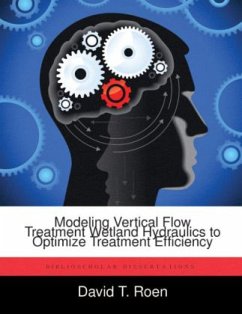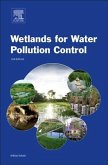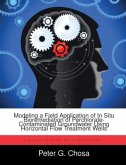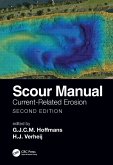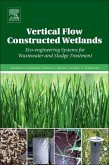An upward Vertical Flow Treatment Wetland (uVFTW) at Wright Patterson AFB designed to bioremediate contaminated groundwater exhibits hydraulic short-circuiting. Prior studies estimated that groundwater flowed through less than 50% of the wetland's volume, and that the mean residence time was significantly less than the nominal residence time, which was calculated assuming flow through the entire wetland volume. The objective of this research was to investigate how uVFTW hydraulics affects treatment efficiency, and to propose design strategies to maximize treatment efficiency. A groundwater flow and contaminant transport model of a uVFTW that couples hydraulics and degradation kinetics was built and applied to estimate the effectiveness of engineering solutions aimed at improving treatment efficiency. Model simulations indicate that the engineering solutions improve hydraulic residence times, volumetric utilization, and treatment efficiency over the existing wetland, but alsothat increasing hydraulic residence time only has a significant impact on treatment efficiency when the time scale for the biodegradation process is similar to the wetland residence time. Degradation kinetics must be quantitatively understood to determine an optimum range for hydraulic residence time, and to ensure that resources are not wasted in an attempt to improve hydraulic performance where no improvement in degradation performance is possible.
Hinweis: Dieser Artikel kann nur an eine deutsche Lieferadresse ausgeliefert werden.
Hinweis: Dieser Artikel kann nur an eine deutsche Lieferadresse ausgeliefert werden.

